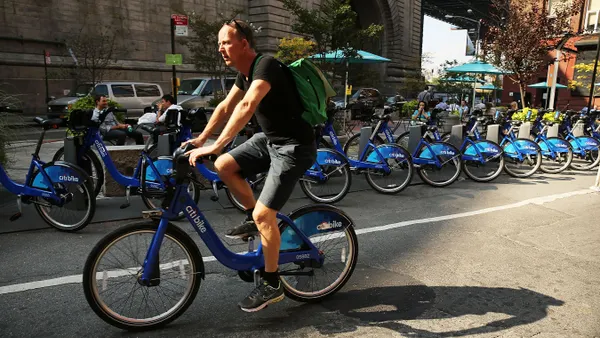Dive Brief:
- Across the U.S., women, renters, Hispanics, Asians and Black residents are “systematically underrepresented” on local land-use decision-making boards, according to a report released April 12 by the Urban Institute.
- Property ownership requirements for participation in some planning bodies could “function as inexplicit racial filters” that keep some groups out of the local democratic process, the report says.
- City leaders can use the findings to examine barriers to entry for their own planning boards to “enable better access among groups that haven't been able to participate in our democratic land-use decision-making processes,” Lydia Lo, one of the report’s authors and an Urban Institute research associate, said in an interview.
Dive Insight:
Who sits on planning and zoning commissions, boards of zoning adjustment and other local land-use governing bodies may not seem like a key determinant of American racial and economic inequities, but these decision-makers are instrumental in shaping the communities we live in, the report says.
“It's one of the most localized areas of government lawmaking that has one of the broadest influences over our lives, and there's just no higher level of oversight and no transparency,” Lo said.
Urban Institute researchers surveyed 482 local officials in 601 land-use decision-making groups within the 50 largest U.S. metro areas in 2022. They found that land-use boards in the country’s biggest cities predominantly consist of white men who own homes and work “white-collar” jobs.
“These results may offer one explanation for why US cities have suffered from decades of inadequate housing construction, low levels of housing affordability, and high levels of segregation,” the researchers said.
On average, non-Hispanic White residents were overrepresented in these decision-making roles by about 15 percentage points compared with their share of the local population, the study finds. That level varied across communities but was especially marked in areas with fewer White residents, suggesting a “persistently inequitable structure channeling white residents into these positions,” researchers said.
Meanwhile, Hispanic, Asian and Black residents were underrepresented by 8, 4 and 1 percentage points, respectively. And while liberal areas, as identified in the study based on two national election surveys, tended to have more Hispanic residents and women in land-use decision-making roles than nonliberal areas, those residents remained underrepresented in communities spanning the political spectrum.
While Lo cautioned that “descriptive representation” doesn’t directly translate to better decisions made on behalf of people with similar backgrounds, “not seeing women, not seeing Hispanics, not seeing renters … shows a lot of why we are seeing so much of a preference in land-use development toward single-family homeownership, or just no development or under-development, in so many places.”
The lack of equitable representation may, in part, be due to the burden of participating in these boards, given these roles are typically unpaid and time-consuming, researchers said. Some boards also place strict restrictions on membership, such as property ownership or degree requirements.
The Urban Institute report finds that boards offering compensation, transit access and flexible meeting times had fewer members who were White, more who were women and more who were Black or Asian. The researchers said states should enact standards that require this kind of support and eliminate property ownership requirements to promote more equitable representation in land-use decision-making roles.
“We're hoping that generally, there's a broader move among cities, or among people, to demand greater transparency in their laws [and] the racial equity implications,” Lo said.










